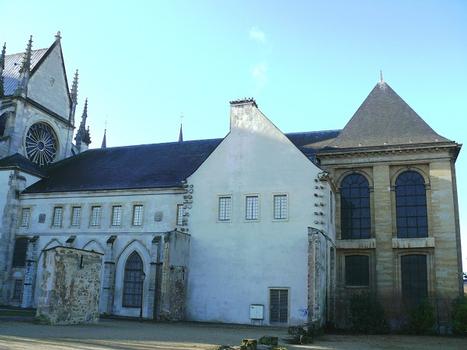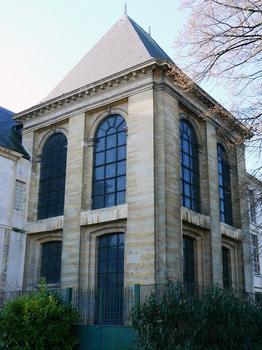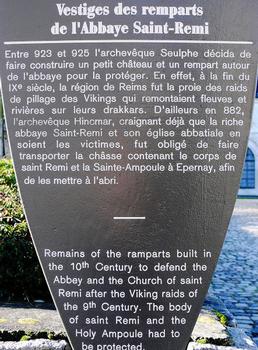General Information
| Beginning of works: | 12th century |
|---|---|
| Completion: | 18th century |
| Status: | in use |
Project Type
| Function / usage: |
original use: Church current use: Museum building |
|---|
Awards and Distinctions
| 1991 |
part of an ensemble
for registered users |
|---|---|
| 1921 |
for registered users |
Location
| Location: |
Reims, Marne (51), Grand-Est, France |
|---|---|
| Address: | 53 rue Simon |
| Coordinates: | 49° 14' 35.53" N 4° 2' 26.30" E |
Technical Information
There currently is no technical data available.
Excerpt from Wikipedia
The Musée Saint-Remi is an archeology and art museum in Reims, France. The museum is housed in the former Abbey of Saint-Remi, founded in the sixth century and which had been keeping since 1099 the relics of Saint Remigius (the Bishop of Reims who converted Frankish king Clovis I to Christianity in 496). The Basilica of Saint-Remi, adjacent to it and consecrated in 1049, was its abbey church, and both buildings have been listed as part of a UNESCO World Heritage Site since 1991.
Building
The obscure origins of the great abbey at Reims lie in a little 6th-century chapel dedicated to Saint Christopher. The abbey's success was founded on its acquisition of the relics of St. Remy in 553; subsequently gifts poured in upon it from pious donors. By the 9th century the abbey possessed about 700 domains and was perhaps the most richly endowed in France. It seems probable that secular priests were the first guardians of the relics, but were succeeded by the Benedictines. From 780 to 945 the archbishops of Reims served as its abbots. At the abbey Charlemagne received Pope Leo III.
In 1005 the abbot Aviard undertook to rebuild the church of St-Remy, and for twenty years the work went on uninterruptedly before vaulting collapsed, no doubt from insufficient buttressing. Abbot Theodoric erected the magnificent surviving basilica which Pope Leo IX dedicated in 1049 and to which he granted many privileges. The abbey library and its schools were of such high repute that Pope Alexander III wrote a commendatory letter to the Abbot Peter, which survives.
The years of around 1170 to 1180 brought further rebuilding, this time to the choir. The purpose of replacing the short eastern section of the Romanesque church was to create a grander and more spacious interior for the shrine of St Remy. The shrine was detached from its previous location, next to the altar, and moved further east.
Among the illustrious later abbots, all drawn from the higher nobility, may be mentioned: Henri de Lorraine (1622–1641), who affiliated the abbey to the Congregation of St. Maur; Jacques-Nicolas Colbert (1665), later archbishop of Rouen; Charles Maurice Le Tellier (1680–1710); and Joseph de Rochechouart, appointed abbot by the king in 1745.
Many valuable objects from the abbey were looted in the French Revolutionary period and the Holy Ampulla of the coronation of the kings of France kept in the abbey was destroyed in 1793, but the 12th-century stained glass remains.
The Abbey of Saint-Remi, together with the nearby cathedral of Notre-Dame de Reims and Palace of Tau, became a UNESCO World Heritage Site in 1991.
Text imported from Wikipedia article "Musée Saint-Remi" and modified on April 11, 2020 according to the CC-BY-SA 4.0 International license.
Participants
Currently there is no information available about persons or companies having participated in this project.
Relevant Web Sites
- About this
data sheet - Structure-ID
20034197 - Published on:
03/02/2008 - Last updated on:
19/03/2024







